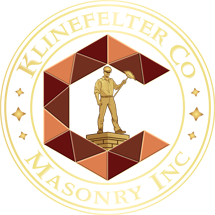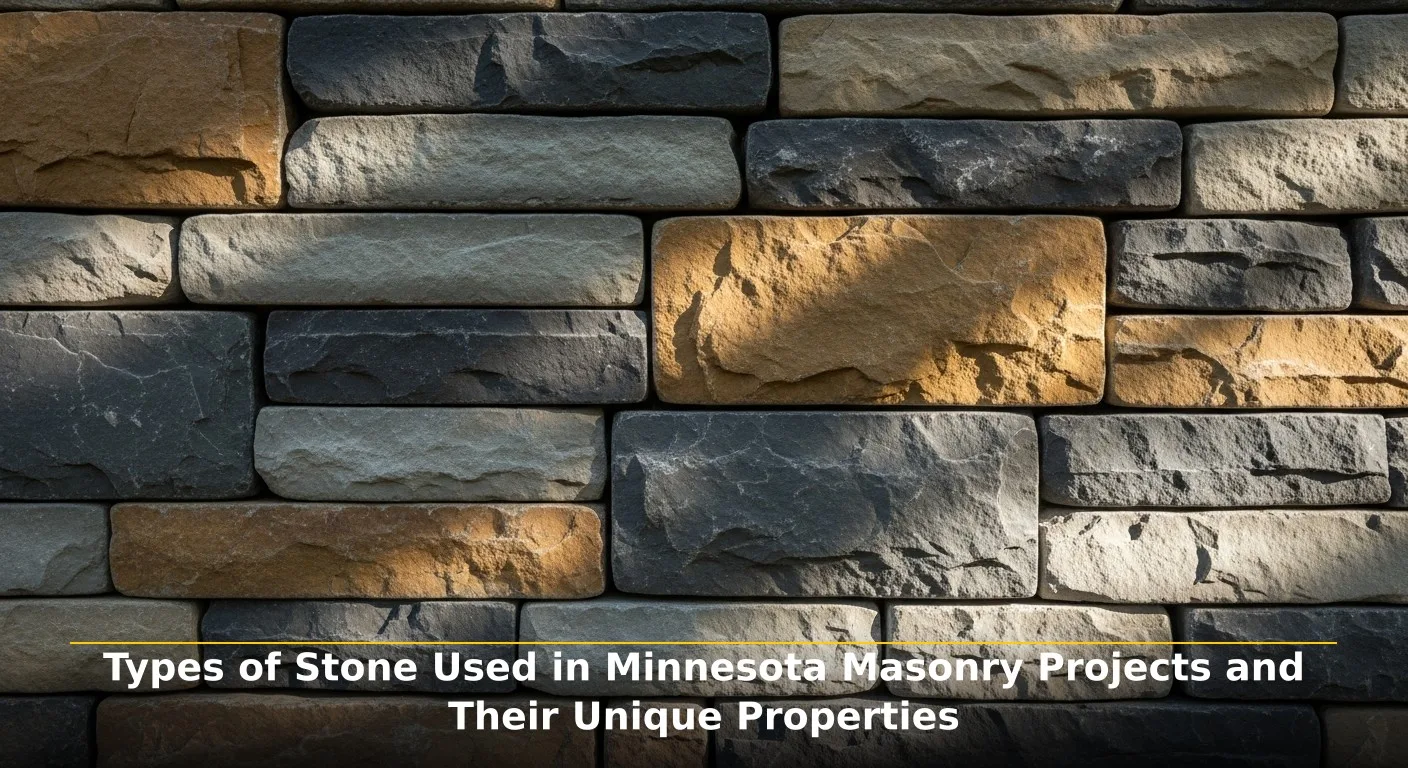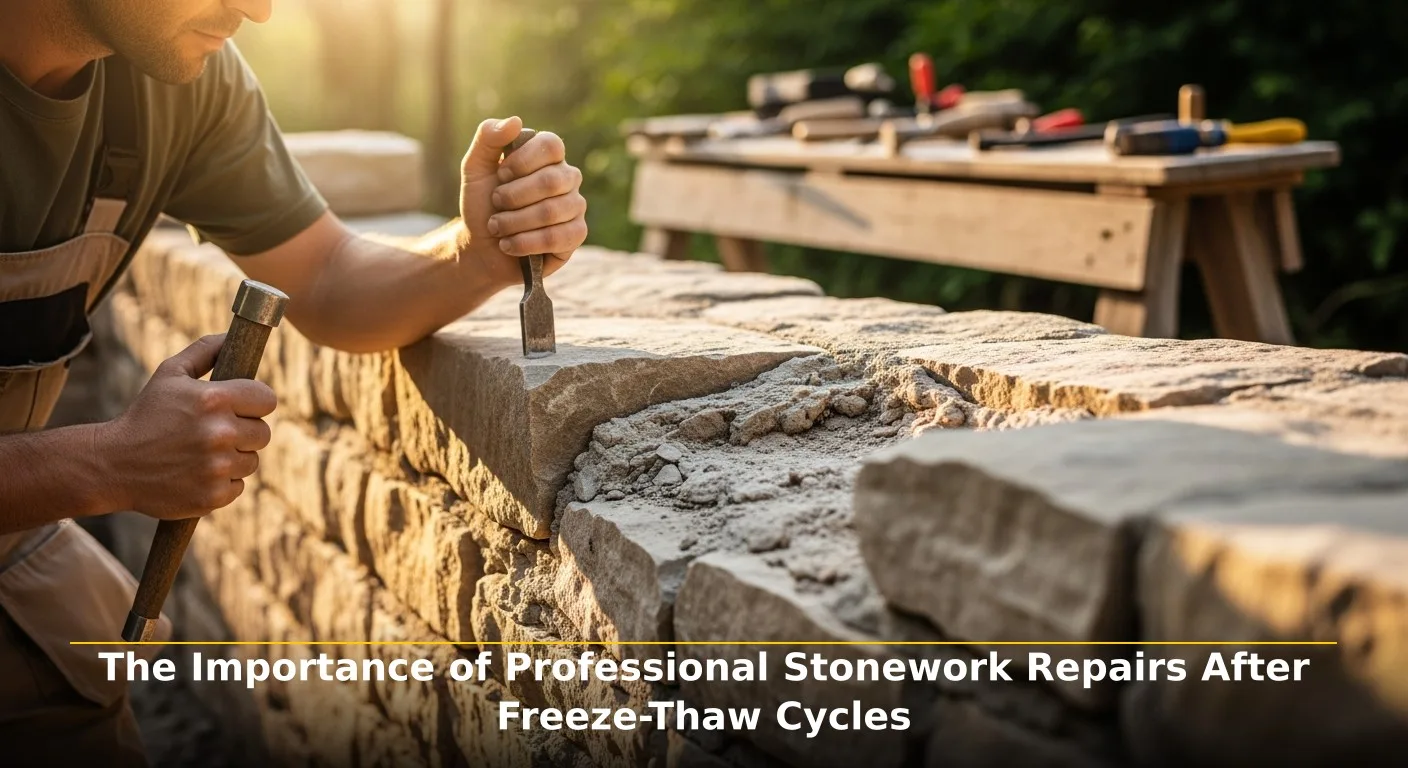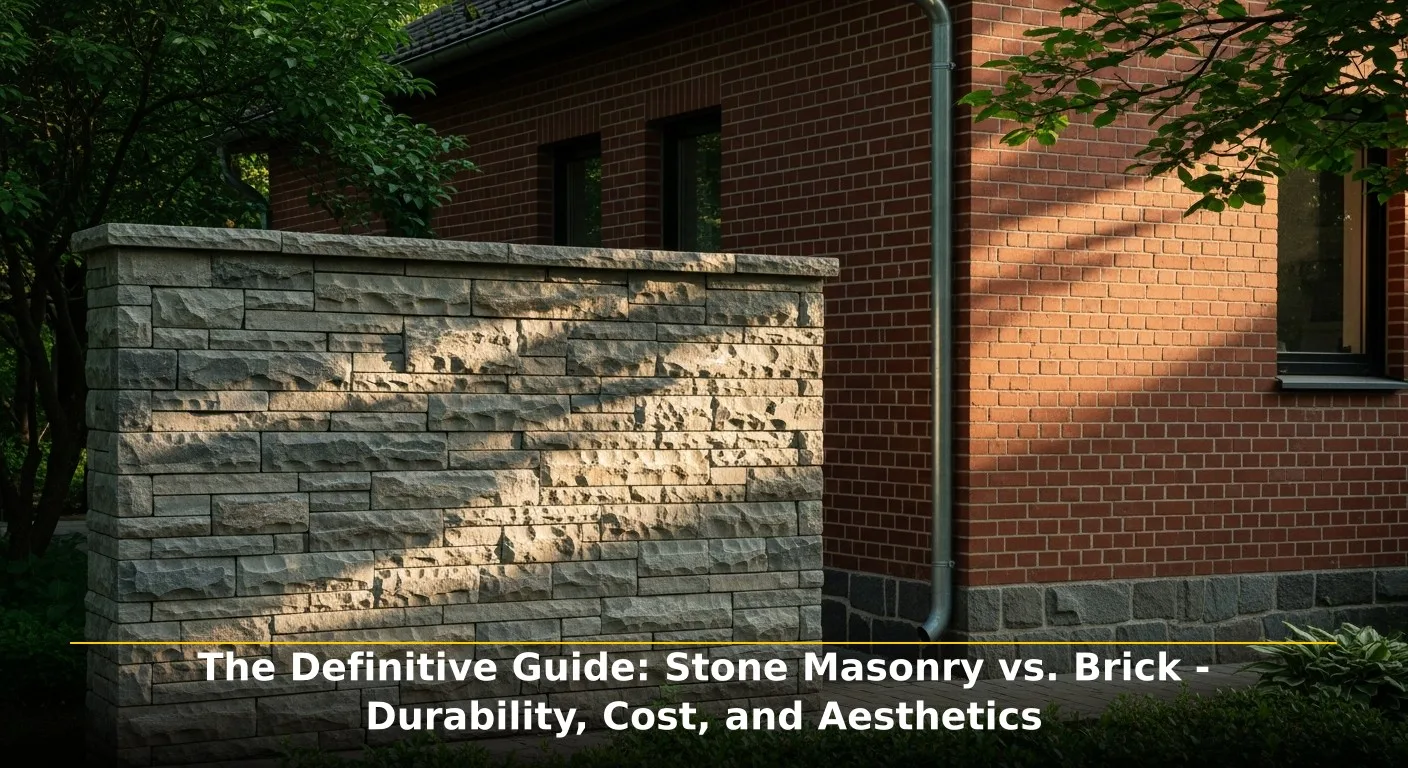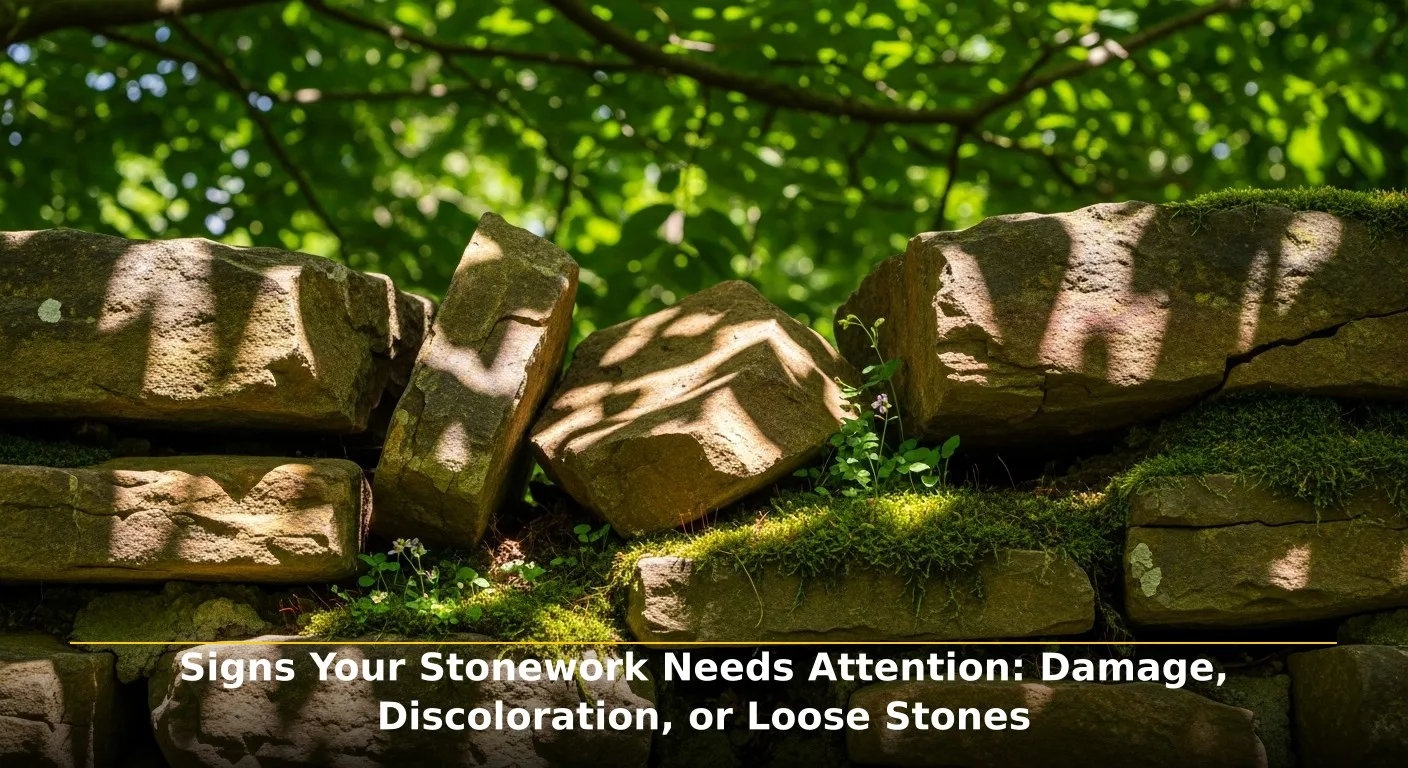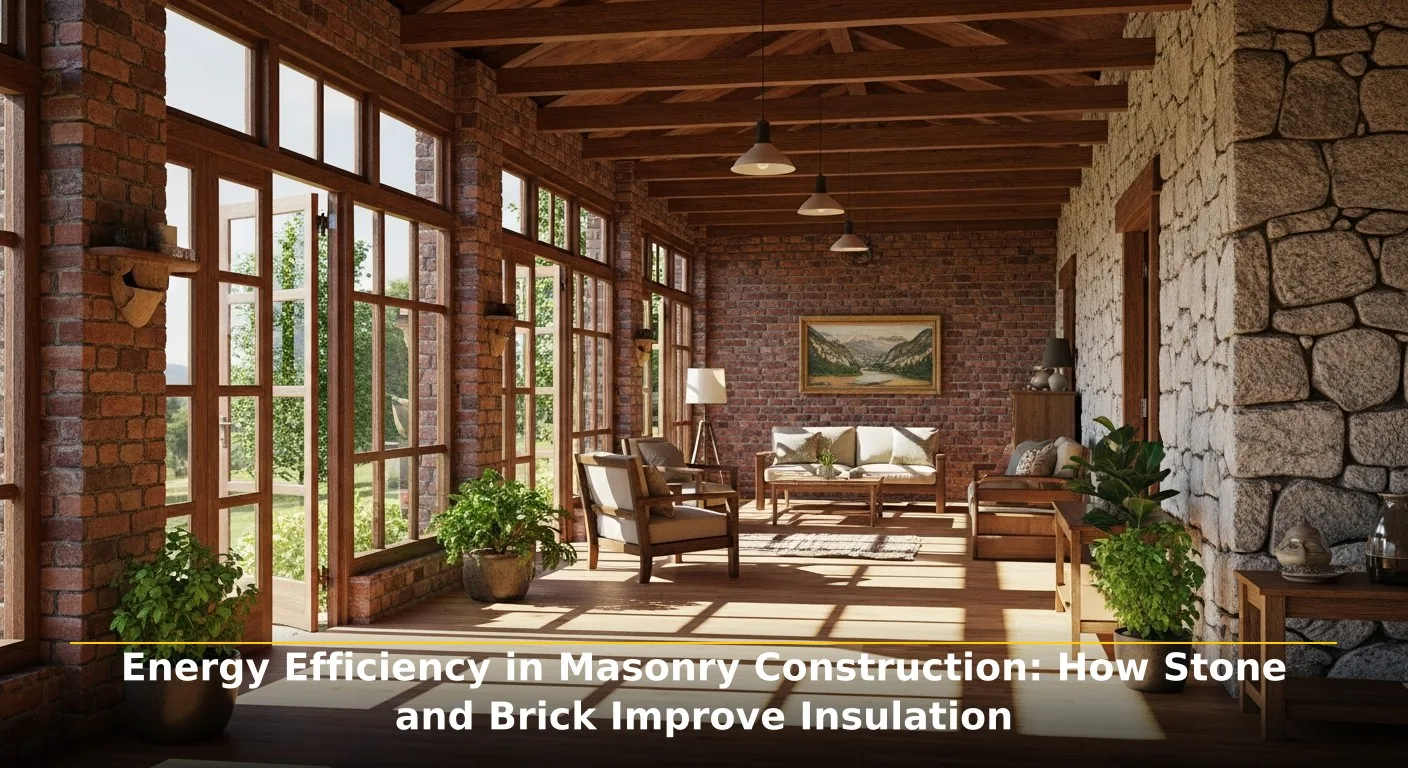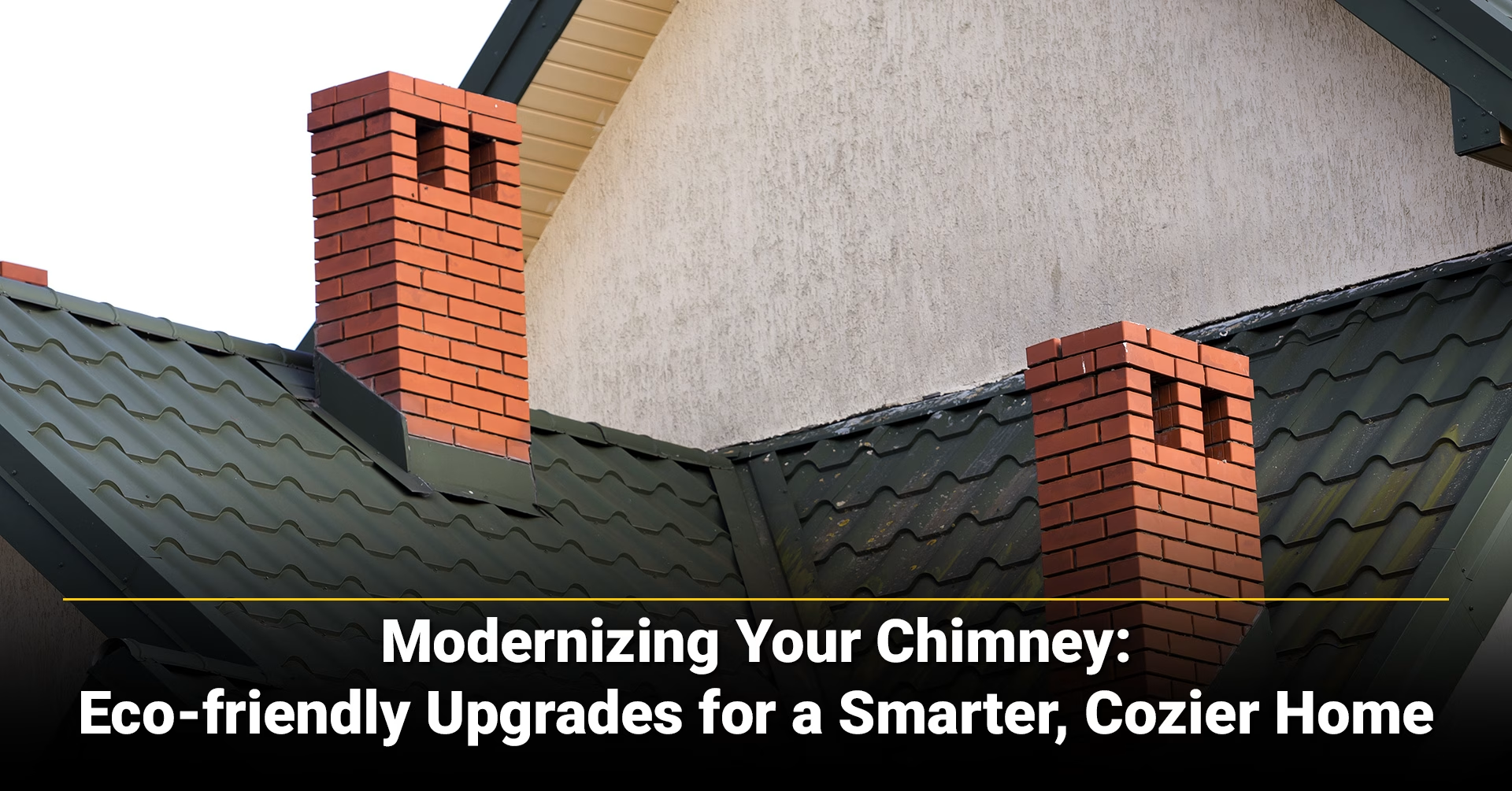A crackling fire on a cold Minnesota evening is a cherished comfort, but traditional fireplaces can be hidden sources of massive energy loss, creating a “cozy illusion.” While fires may feel soothing, a majority of their heat escapes through chimneys via the “stack effect.” This occurs when warm air rises and creates negative pressure that draws cold outdoor air through home gaps, forcing furnaces to work overtime. Our guide examines modern, eco-friendly upgrades that transform inefficient fireplaces into powerful, sustainable heating systems.
Key Takeaways: What you’ll learn in this guide
A. Energy vampire diagnosis – Traditional fireplaces lose up to 90% of heat and increase energy costs by 30%
B. Modern upgrade solutions – Top-sealing dampers reduce heat loss by 90%, fireplace inserts achieve 72%-86% efficiency
C. Professional installation benefits – CSIA-certified technicians ensure EPA 2020 compliance and optimal performance
D. Financial incentives available – Federal tax credits provide 30% back (up to $2,000), Minnesota utilities offer substantial rebates
E. Return on investment – Comprehensive upgrades deliver 2-7 year payback periods with annual savings
F. System integration approach – Dampers, inserts, liners, and heat distribution work together for maximum efficiency
1. Your Fireplace: An Energy Vampire in Disguise
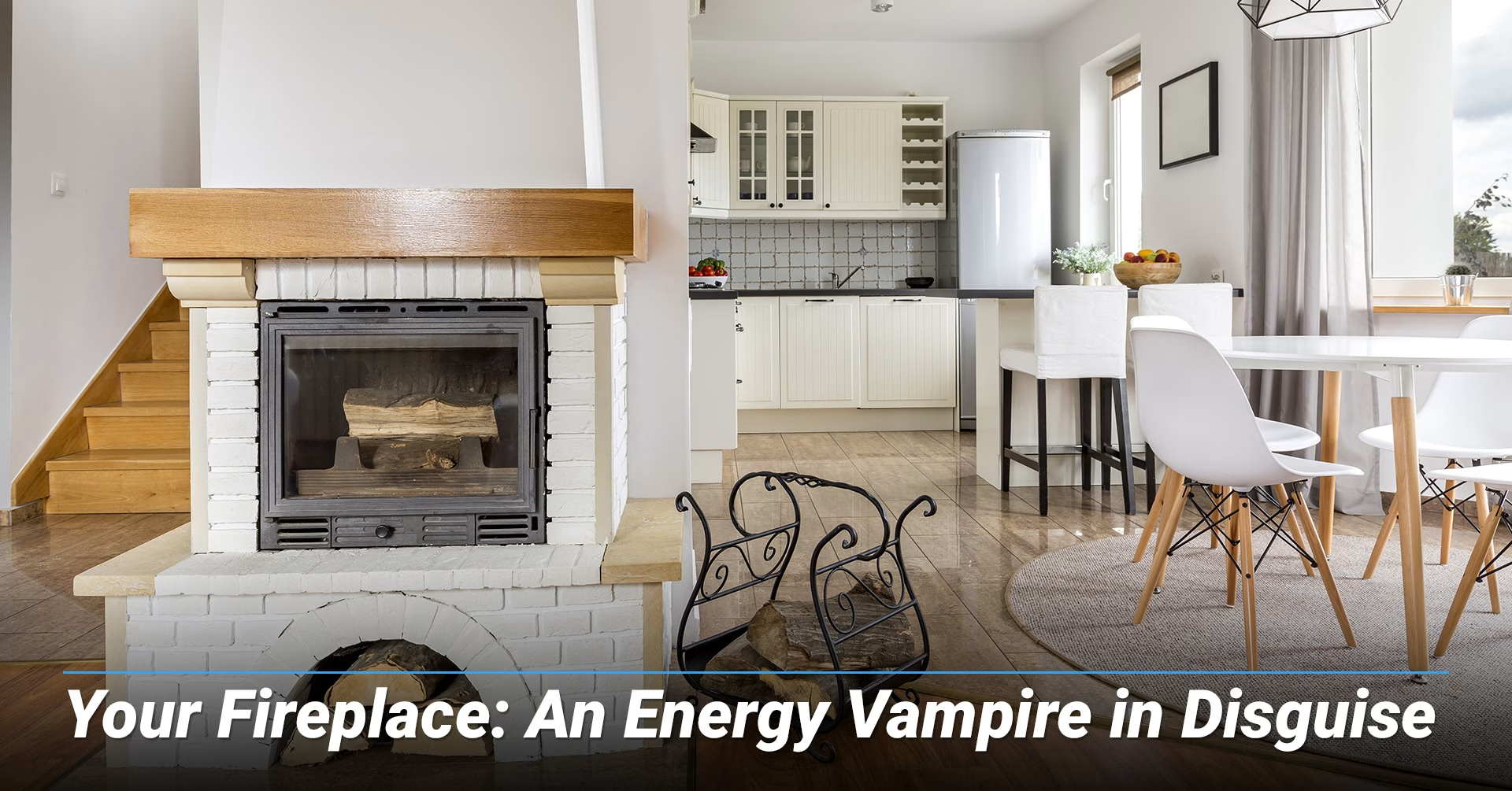
An open fireplace can be an “energy vampire,” losing 85% to 90% of heat produced directly up the chimney. That’s the same as leaving a window open all winter. Traditional fireplaces exhaust massive amounts of conditioned air that must be replaced with cold outdoor air.
The primary culprit is the traditional throat damper—a metal-on-metal flap above the firebox notorious for inefficiency. Even when fully closed, it creates poor seals, allowing warm air out and cold air in. Over time, heat, moisture, and soot cause metal warping and rusting, creating larger gaps. When fireplaces aren’t in use, leaky dampers can raise home energy consumption by 30% which creates uncomfortable living spaces.
A. Modern Upgrade: The Top-Sealing Chimney Damper
Top-sealing chimney dampers address traditional flaws by installing at the top rather than the throat. These feature durable cast aluminum or stainless steel construction with silicone rubber gaskets creating airtight seals. A stainless steel cable runs down the chimney, connected by an interior handle for convenient operation. Doing so completely seals the chimney, reducing air loss by up to 90%.
Beyond energy savings, top-sealing dampers function as chimney caps, providing year-round protection from rain, snow, debris, and animals. An airtight seal prevents smoky odors while eliminating cold drafts that throat dampers allow.
Traditional vs. Top-Sealing Chimney Dampers
Feature | Traditional Throat Damper | Modern Top-Sealing Damper |
|---|---|---|
Location | In the fireplace throat, just above the firebox | At the top of the chimney flue |
Seal | Metal-on-metal, often leaky due to warping and rust | Silicone or rubber gasket, creates an airtight seal |
Protection | Little to no protection from rain, animals, or debris | Acts as a chimney cap; seals out rain, snow, animals, and debris |
Efficiency | Inefficient; allows significant heat loss and drafts | Highly efficient; reduces air loss by up to 90% |
Durability | Prone to warping and rusting from heat and moisture | Made of durable stainless steel or cast aluminum, resistant to rust and corrosion |
While initial investments in top-sealing dampers exceeds simple throat damper replacement, long-term energy savings have a greater pay off in the long run.
B. Modern Upgrade: The Fireplace Insert Solution
Fireplace inserts transform open fireplaces into sealed, controlled heating systems. These self-contained appliances fit directly into existing openings, converting inefficient models into powerful heating sources.
The efficiency improvement is dramatic. While open fireplaces operate around 10%-20%, EPA-certified wood inserts reach 72%-86% efficiency, with gas inserts exceeding 90%. Improvements stem from sealed combustion chambers with controlled airflow and heat exchange systems that circulate warm air into rooms rather than up chimneys.
Fireplace Insert Fuel Types: A Quick Comparison
Feature | EPA-Certified Wood | Gas (Natural Gas/Propane) | Pellet |
|---|---|---|---|
Efficiency | 72%–86% | >90% | Highly efficient, often automated |
Environmental Impact | Creates emissions, but much less than an open hearth | Very clean burning; 99% fewer particles than wood | Burns pellets made from compressed sawdust; very clean |
Ease of Use | Requires splitting, stacking, and feeding logs; daily ash cleanup | Instant on/off with a remote; no cleanup | Automatic pellet feed; requires refilling hopper, some ash cleanup |
Heat Output | Can produce very high heat for long periods | Consistent heat output with variable controls | Consistent, regulated heat output |
Blower fans turn inserts into true heating appliances by reclaiming heat from wall cavities behind fireplaces. They draw cool room air into inserts and heat within sealed chambers before pushing warmed air into living spaces. Active circulation significantly increases heat output, provides consistent temperatures, and reduces central heating reliance.
2. The Deeper Dive: Beyond the Insert
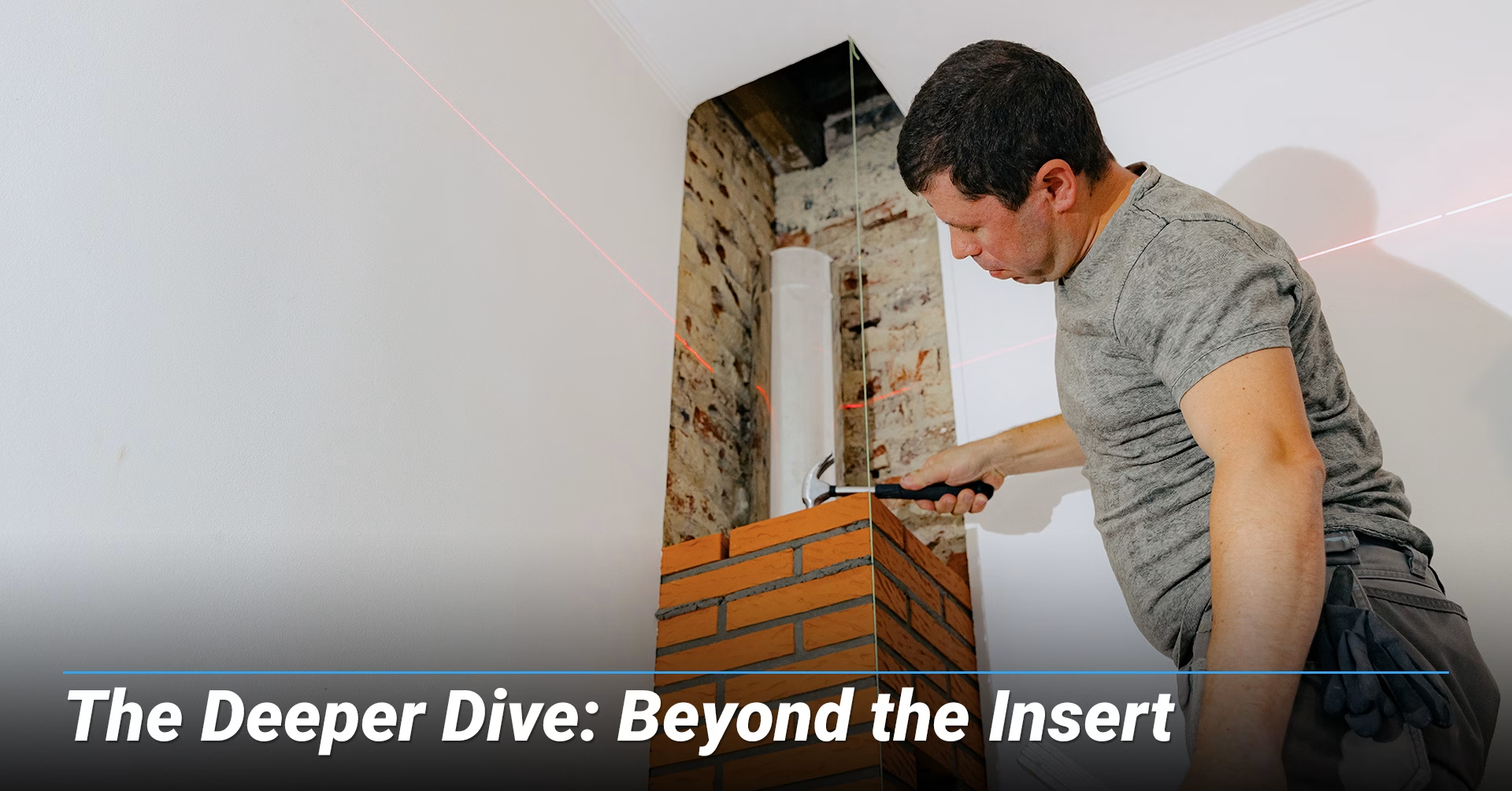
Upgrading fireplaces involves more than visible appliances—the entire system must work safely and efficiently, starting with chimney liners.
A. The Critical Role of a Chimney Liner
Modern flue liners are essential for safety and efficiency, containing high heat and combustion gases while protecting surrounding materials from fire and carbon monoxide exposure. New fireplace inserts require properly sized liners meeting manufacturer and building code requirements.
Stainless steel liners offer durability and versatility for various fuel types. 316Ti stainless steel with titanium stabilization is the premium standard, rated to 2,100°F with superior corrosion resistance, and lifetime warranties. Cast-in-place liners provide permanent alternatives that also reinforce chimney structure.
B. Insulating for Maximum Efficiency
Insulated flue liners are crucial for efficient systems. Insulation, typically mineral wool or vermiculite, installs between new liners and existing masonry. Doing so serves two purposes: helping flues warm faster for improved draft, and preventing excessive creosote buildup that causes chimney fires. Well-insulated systems prevent heat transfer to surrounding materials while reducing energy loss.
C. The Bottom Line for Minnesota Homeowners
Smart chimney upgrades invest in home safety, comfort, and sustainability. Homeowners in the North Star state can access substantial financial support through utility rebates and federal incentives. Minnesota’s Enhanced ECO Act dramatically increased utility rebates in 2024, while federal Section 25C tax credits provide 30% back (capped at $2,000 annually) for biomass heating appliances achieving 75% thermal efficiency. This credit has no lifetime limits and runs through 2032.
Professional installation by CSIA-certified technicians is essential. These upgrades involve fire, carbon monoxide, and structural risks too high for DIY approaches. CSIA Certified Chimney Sweep® credentials require comprehensive IRC and NFPA testing with 3-year renewal cycles, ensuring technicians maintain current code knowledge and installation expertise.
3. Return on Investment and Performance Benefits
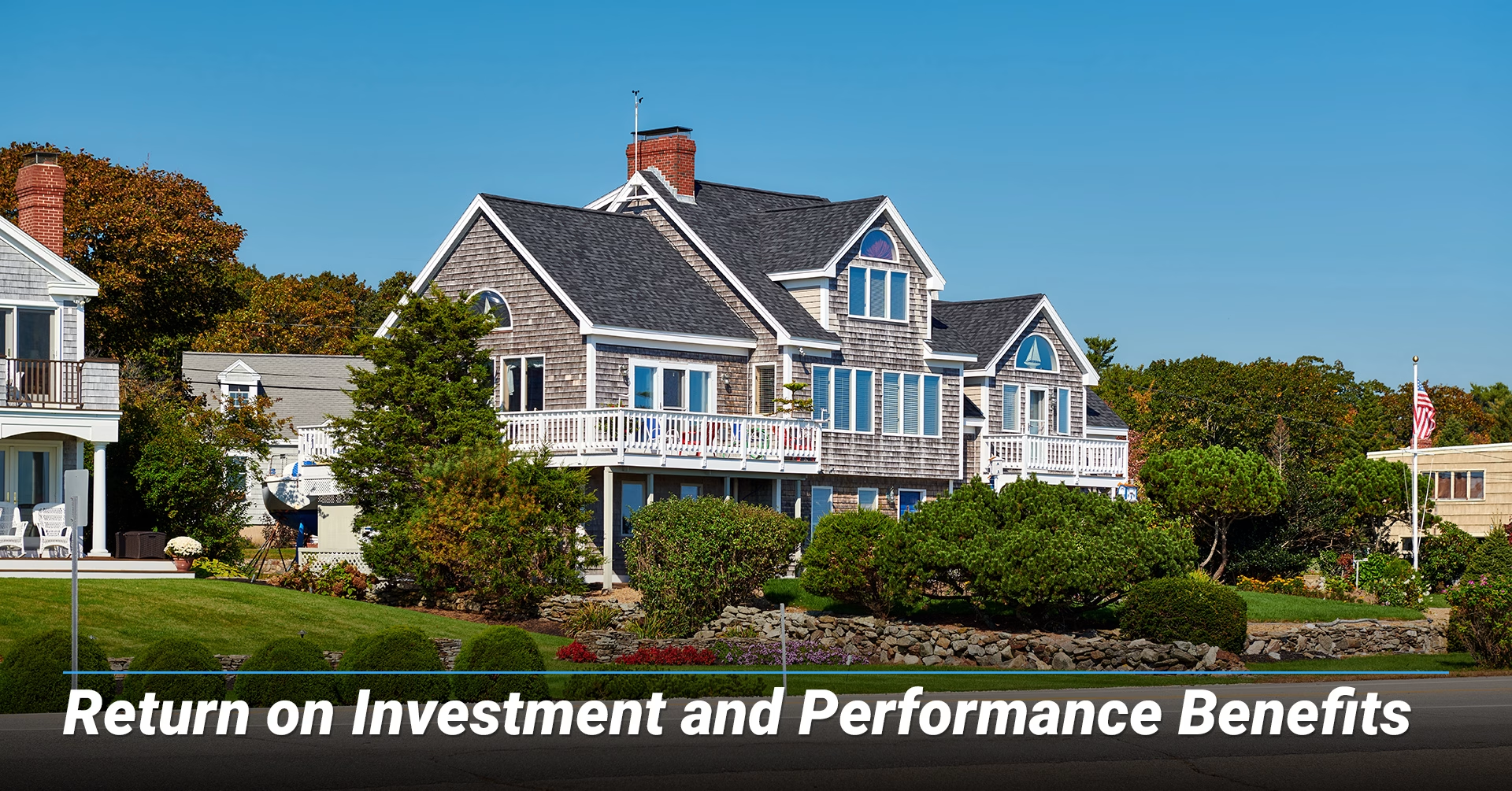
A. Financial Performance Analysis
Comprehensive chimney upgrades deliver excellent return on investment with 2-7 year payback periods. Top-sealing dampers offer the quickest returns at 1-3 years, often saving homeowners substantial amounts annually by eliminating stack effect losses that force HVAC systems to work 20%-40% harder.
Fireplace inserts provide substantial long-term value, reducing heating costs by 40% while using 67% less fuel for equivalent output. Modern EPA-certified appliances transform negative-efficiency fireplaces into 70%-85% efficient systems—efficiency improvements by factors of 5-10.
Complete system investments are substantially offset by utility rebates and federal tax credits reducing net costs by 30%-50%. Comprehensive projects deliver significant annual savings with added benefits of improved comfort and eliminated drafts.
B. Environmental and Safety Benefits
Modern EPA-certified appliances reduce particulate emissions by 90% compared to traditional fireplaces. EPA Phase 2 standards mandate 2.0 g/hr maximum emissions, with leading manufacturers achieving ultra-low 0.54 g/hr—significantly exceeding requirements.
Fire safety improvements include reduced creosote buildup and chimney fire risks, preventing moisture intrusion, and pest entry. Professional installation eliminates common violations such as undersized liners and inadequate clearances, ensuring warranty coverage and insurance compliance.
Frequently Asked Questions (FAQ)
1. How do I determine the right size insert for my existing fireplace?
Sizing is critical for both safety and optimal performance. The first step is to measure the existing fireplace opening, including the front and rear widths, height, and depth. Beyond physical dimensions, one must consider the heat output, or BTU rating, required to warm the square footage of the room. A certified hearth professional can help match the right-sized insert to the specific fireplace dimensions and heating needs.
2. Can a chimney relining be a do-it-yourself project?
A chimney relining is a complex and technical job that involves a number of safety considerations. It requires specialized tools and expertise to ensure the liner is properly sized for the heating appliance, correctly sealed, and code compliant. Failure to install a liner correctly can lead to dangerous leaks being prone to carbon monoxide poisoning or a house fire. For these reasons, hiring a professional is a critical safety measure.
3. How does a fireplace blower fan differ from a whole-home heat recovery system?
A fireplace blower is a localized system that uses a fan to pull cool air from the room, heat it using the fire’s energy, and then circulate that warm air back into the immediate living area. A whole-house Heat Recovery Ventilator (HRV) is a more complex, duct-based system that works to continuously exchange stale indoor air with fresh outdoor air. It transfers heat from the outgoing air to the incoming air without them ever mixing. This reduces the strain on your central heating system and improves indoor air quality.
4. Is a fireplace insert an eco-friendly upgrade?
Yes, a modern fireplace insert is considered a significant eco-friendly upgrade. While an open fireplace is highly inefficient and contributes to air pollution, an EPA-certified wood insert burns fuel cleaner and efficiently. Gas and pellet inserts are considered better environmental options as they produce significantly fewer particulate emissions than wood-burning appliances.
5. How is a top-sealing damper different from a traditional throat damper?
A traditional throat damper is a metal-on-metal flap located at the base of the chimney, which is prone to warping and rusting, creating an inefficient seal. A top-sealing damper, by contrast, is a durable lid with a rubber gasket that is installed at the top of the chimney flue, creating a superior, airtight seal that prevents drafts and energy loss. It also serves as a chimney cap, protecting the flue from rain, debris, and animals.
